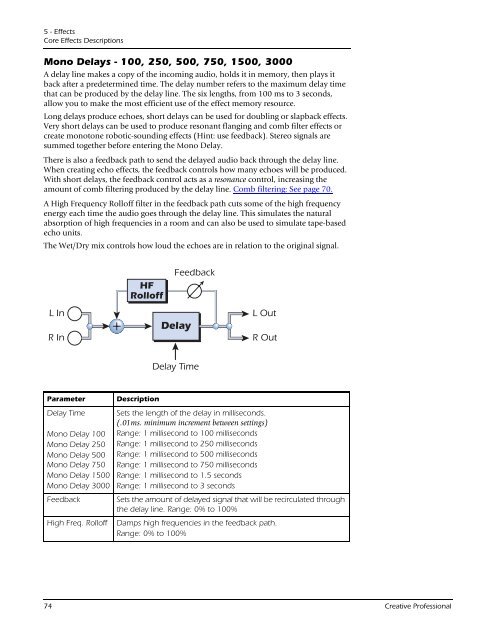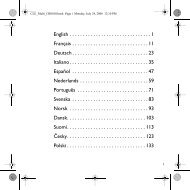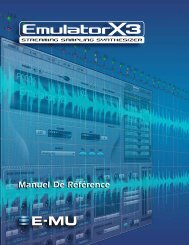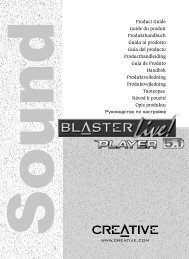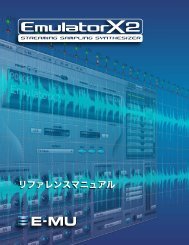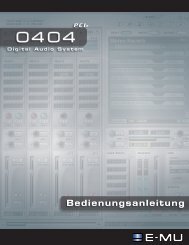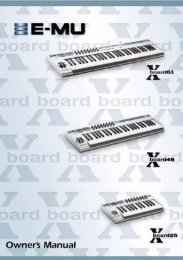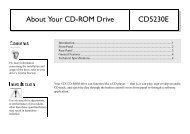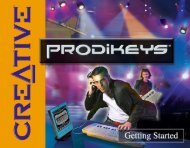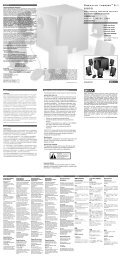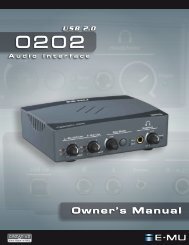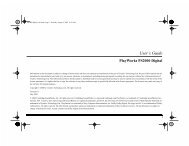Create successful ePaper yourself
Turn your PDF publications into a flip-book with our unique Google optimized e-Paper software.
5 - Effects<br />
Core Effects Descriptions<br />
Mono Delays - 100, 250, 500, 750, 1500, 3000<br />
A delay line makes a copy of the incoming audio, holds it in memory, then plays it<br />
back after a predetermined time. The delay number refers to the maximum delay time<br />
that can be produced by the delay line. The six lengths, from 100 ms to 3 seconds,<br />
allow you to make the most efficient use of the effect memory resource.<br />
Long delays produce echoes, short delays can be used for doubling or slapback effects.<br />
Very short delays can be used to produce resonant flanging and comb filter effects or<br />
create monotone robotic-sounding effects (Hint: use feedback). Stereo signals are<br />
summed together before entering the Mono Delay.<br />
There is also a feedback path to send the delayed audio back through the delay line.<br />
When creating echo effects, the feedback controls how many echoes will be produced.<br />
With short delays, the feedback control acts as a resonance control, increasing the<br />
amount of comb filtering produced by the delay line. Comb filtering: See page 70.<br />
A High Frequency Rolloff filter in the feedback path cuts some of the high frequency<br />
energy each time the audio goes through the delay line. This simulates the natural<br />
absorption of high frequencies in a room and can also be used to simulate tape-based<br />
echo units.<br />
The Wet/Dry mix controls how loud the echoes are in relation to the original signal.<br />
L In<br />
R In<br />
HF<br />
Rolloff<br />
Feedback<br />
Delay<br />
Delay Time<br />
L Out<br />
R Out<br />
Parameter Description<br />
Delay Time Sets the length of the delay in milliseconds.<br />
(.01ms. minimum increment between settings)<br />
Mono Delay 100 Range: 1 millisecond to 100 milliseconds<br />
Mono Delay 250 Range: 1 millisecond to 250 milliseconds<br />
Mono Delay 500 Range: 1 millisecond to 500 milliseconds<br />
Mono Delay 750 Range: 1 millisecond to 750 milliseconds<br />
Mono Delay 1500 Range: 1 millisecond to 1.5 seconds<br />
Mono Delay 3000 Range: 1 millisecond to 3 seconds<br />
Feedback Sets the amount of delayed signal that will be recirculated through<br />
the delay line. Range: 0% to 100%<br />
High Freq. Rolloff Damps high frequencies in the feedback path.<br />
Range: 0% to 100%<br />
74 <strong>Creative</strong> Professional


